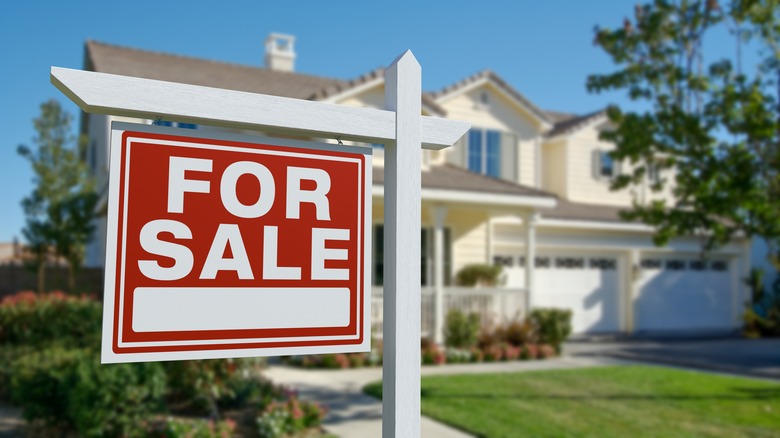You'll Need To Make Nearly Double The Average Income To Afford A Home In These US States
If you're hoping to lay roots and buy a "typical" home in today's market, you might need to rethink your budget. According to Bankrate's 2025 Housing Affordability Study, the annual household income needed to afford a median-priced home in the U.S. has surged to about $117,100. That's nearly a 50% jump since early 2020 when pandemic-era interest rates and prices created a deceptively accessible market. In contrast, the U.S. median household income in 2023 hovered around $80,000, according to the U.S. Census Bureau. And with real estate trends forecasting even more shifts in 2025, the gap between income and affordability may only grow wider.
To put this in real-world terms, imagine a dual-income household where each adult earns the national median of roughly $40,000. Even combined, they're still more than $35,000 short of what's now needed to afford a typical home. And that's without factoring in student debt, child care, or rising costs of living. What does this mean? Homeownership is rapidly slipping into nice-to-have and near-luxury territory, especially in several key states where the gap between earnings and affordability is yawning wider by the month.
These states require double the average income to afford a home
Some states make that $117,100 target look almost quaint. Bankrate's study highlights the three most challenging places for prospective homebuyers: the District of Columbia, Hawaii, and California. (While D.C. is constitutionally a federal district under the jurisdiction of the U.S. Congress, it also operates as a state and is treated as such in over 500 federal laws.) In D.C., residents would need a staggering $240,009 annual household income to buy a median-priced home. In Hawaii, it's $235,638, while in California, the figure sits at $213,447. Compare that to the actual average household incomes: D.C. households average about $157,210, Hawaii hovers around $113,865, and California households earn roughly $109,349, according to Statista.
Let's take California as a case in point. A typical household earning $109,349 would need to increase its income by more than $100,000, or nearly double, just to meet the affordability threshold. That's the equivalent of adding an entire second tech salary to your household just to break even. Moreover, the down payment alone for a typical home in 2025 could stretch far beyond six figures, making even a mortgage approval feel like just the first in a series of steep financial climbs. In each of these states, the "required" income is more than double the reality.
Why California's housing crisis matters beyond state lines
While California's staggering $213,447 threshold might seem like an outlier, it's more of a harbinger. Experts warn that the state's affordability crisis offers a preview of challenges spreading across the nation. Legislative efforts like Senate Bill 9 (SB9), enacted in 2022 to end single-family zoning and encourage duplex construction, initially promised to add up to 700,000 homes. But three years later, the results are underwhelming. San Francisco has received just 32 applications for SB9 duplexes, San Jose only 37. Critics, who include property law experts, say the law is mostly symbolic, hampered by requirements like the owner-occupancy mandate. A new bill, SB677, aims to ease restrictions, but some fear the pace may mirror the decades-long delay seen with accessory dwelling units (ADUs). The full impact remains uncertain. Meanwhile, migration trends reveal a significant number of Californians relocating to more affordable states, as confirmed by the U.S. Census Bureau's migration flows and U-Haul's 2024 Growth Index.
Despite some housing price trends in 2025 bringing modest relief to certain buyers, the Golden State's affordability crunch is still marching in the wrong direction. More troubling is how these same pressures are reshaping housing markets across the country. As cities like Denver and Miami follow similar paths, California's version of the "California Dreamin'" era now looks more like a flashing warning sign that, if left unchecked, could see soaring housing costs redefine who gets to participate in the American Dream nationwide.


